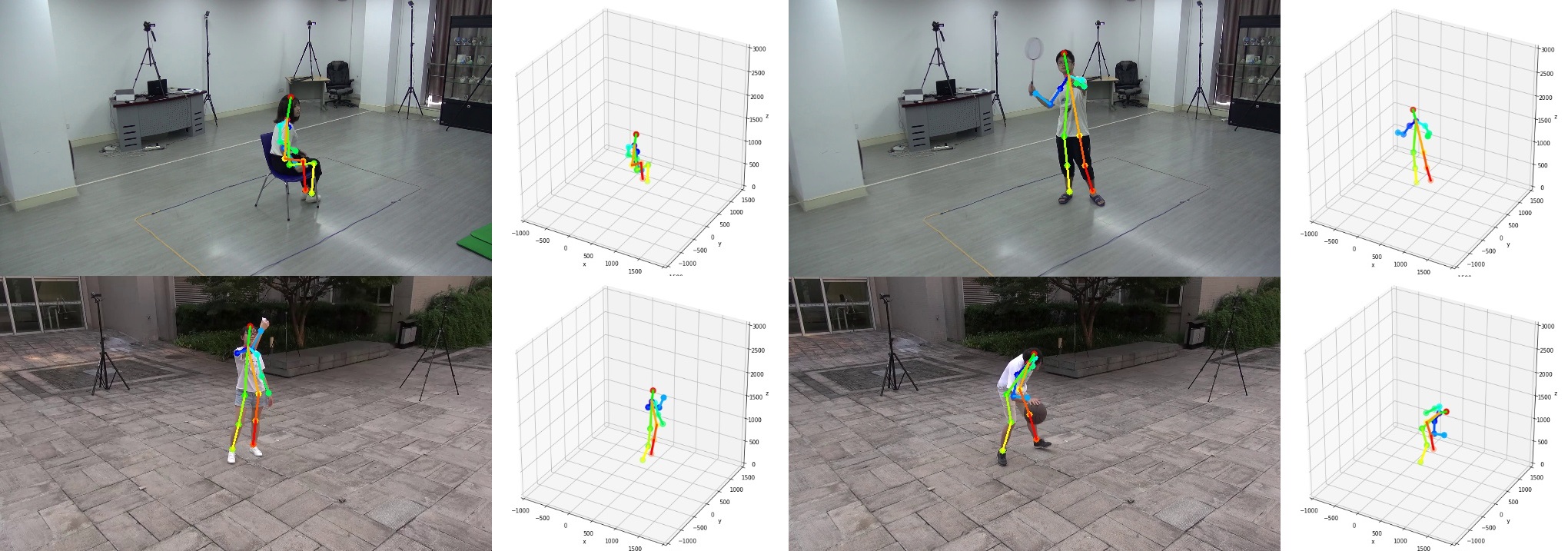PoseData II

Introduction
We provide a dataset of 3D human pose estimation in both indoor and outdoor environments. It consists
- 480,000 images
- 280 video sequences
- 10 actors
- 14 scenarios
- Indoor and Outdoor
Download
Data Description
For each human figure in the dataset, we labeled it with 14 human skeletal keypoints, and the numeric orders of these keypoints are showed in Table 1, which are: 1-right shoulder, 2-right elbow, 3-right wrist, 4-left shoulder, 5-left elbow, 6-left wrist, 7-right hip, 8-right knee, 9-right ankle, 10-left hip, 11-left knee, 12-left ankle, 13-top of the head and 14-neck.
Table 1: The numerical orders of human skeletal keypoints
| Number | keypoint |
|---|---|
| 1 | right shoulder |
| 2 | right elbow |
| 3 | right wrist |
| 4 | left shoulder |
| 5 | left elbow |
| 6 | left wrist |
| 7 | right hip |
| 8 | right knee |
| 9 | right ankle |
| 10 | left hip |
| 11 | left knee |
| 12 | left ankle |
| 13 | top of the head |
| 14 | neck |
The 2D annotations are stored in MAT format, and each sequence has a MAT file.
A 3-D matrix is stored in the MAT file and the size of matrix is f x 14 x 3, where f is the number of frames in the sequence and 14 is the number of keypoints.
(x, y, v) is annotated for each keypoint, in which (x, y) indicates the location of the given keypoint and v is the confident flag (v = 1: confident, v = 0: not confident).
The 3D annotations are also stored in MAT format, and each sequence has a MAT file.
A 3-D matrix is stored in the MAT file and the size of matrix is f x 14 x 3, where f is the number of frames in the sequence and 14 is the number of keypoints.
(x, y, z) is annotated for each keypoint, in which (x, y, z) indicates the global location of the given keypoint.
Data Viewer
A Data Viewer can preview the dataset. Runing python dataviewer.py at root folder.
prerequisites
- Python 2.7
- NumPy, SciPy
- Matplotlib
- Tkinter
- Pillow